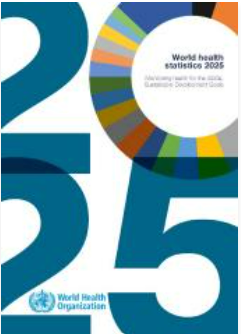- View Global Health Gains at Risk: A Wake-Up Call from WHO’s 2025 Report Currently reading
Report & Analysis Summary |Global Health
Global Health Gains at Risk: A Wake-Up Call from WHO’s 2025 Report
Time to read: 01:19
Published on MedED: 20 May 2025
Originally Published: 15 May 2025
Source: WHO
Type of article: News Update
MedED Catalogue Reference: MNCS008
Category: Global Health
Cross-reference: Mortality
Keywords: mortality morbiditiy, COVID-19, maternal wellbeing, childhood wellbeing
Originally Published in WHO. This is a summary of the original report and in no way represents the original research. Access Content Disclaimer
The World Health Organisation’s newly released World Health Statistics Report 2025 paints a sobering picture of global health.
The COVID-19 pandemic’s ripple effects are still being felt, with life expectancy dropping by a staggering 1.8 years between 2019 and 2021—an unprecedented decline that erases nearly a decade of progress. Mental health challenges, especially rising anxiety and depression, have further chipped away at healthy life expectancy, setting back hard-won improvements.
The report highlights slow progress towards WHO’s Triple Billion targets. While over 1.4 billion people now live healthier lives thanks to reductions in tobacco use, better air quality, and improved sanitation, gains in essential health service coverage and emergency preparedness remain insufficient.
Only 431 million additional people gained access to healthcare without financial burden—far below what’s needed.
Maternal and child mortality rates, once declining steadily, are now plateauing. Without urgent intervention, the world could see 700,000 additional maternal deaths and 8 million more under-five deaths by 2030. Shortages in healthcare workers and underinvestment in primary care are key barriers.
Noncommunicable diseases—like heart disease and cancer—continue to claim lives prematurely. Though progress has been made in reducing tobacco and alcohol use, the global community is still off track to meet its 2030 NCD mortality reduction goals.
Meanwhile, infectious diseases present a mixed outlook: progress in HIV and TB is overshadowed by a malaria resurgence and setbacks in vaccination coverage.
The WHO underscores the urgent need for stronger data systems and better funding. Without strategic investment and political will, global health progress could stall further. But as WHO leaders emphasize, rapid, measurable gains are still within reach—if the world acts decisively and together.
WATCH THE PRESS CONFERENCE
15 May 2025 | WHO | WHO warns of slowing global health gains in new statistics report
Disclaimer
This article is in no way presented as an original work. Every effort has been made to attribute quotes and content correctly. Where possible, all information has been independently verified. The Medical Education Network bears no responsibility for any inaccuracies which may occur from the use of third-party sources. If you have any queries regarding this article contact us
Fact-checking Policy
The Medical Education Network makes every effort to review and fact-check the articles used as source material in our summaries and original material. We have strict guidelines in relation to the publications we use as our source data, favouring peer-reviewed research wherever possible. Every effort is made to ensure that the information contained here accurately reflects the original material. Should you find inaccuracies or out-of-date content or have any additional issues with our articles, please make use of the Contact Us form to notify us.



